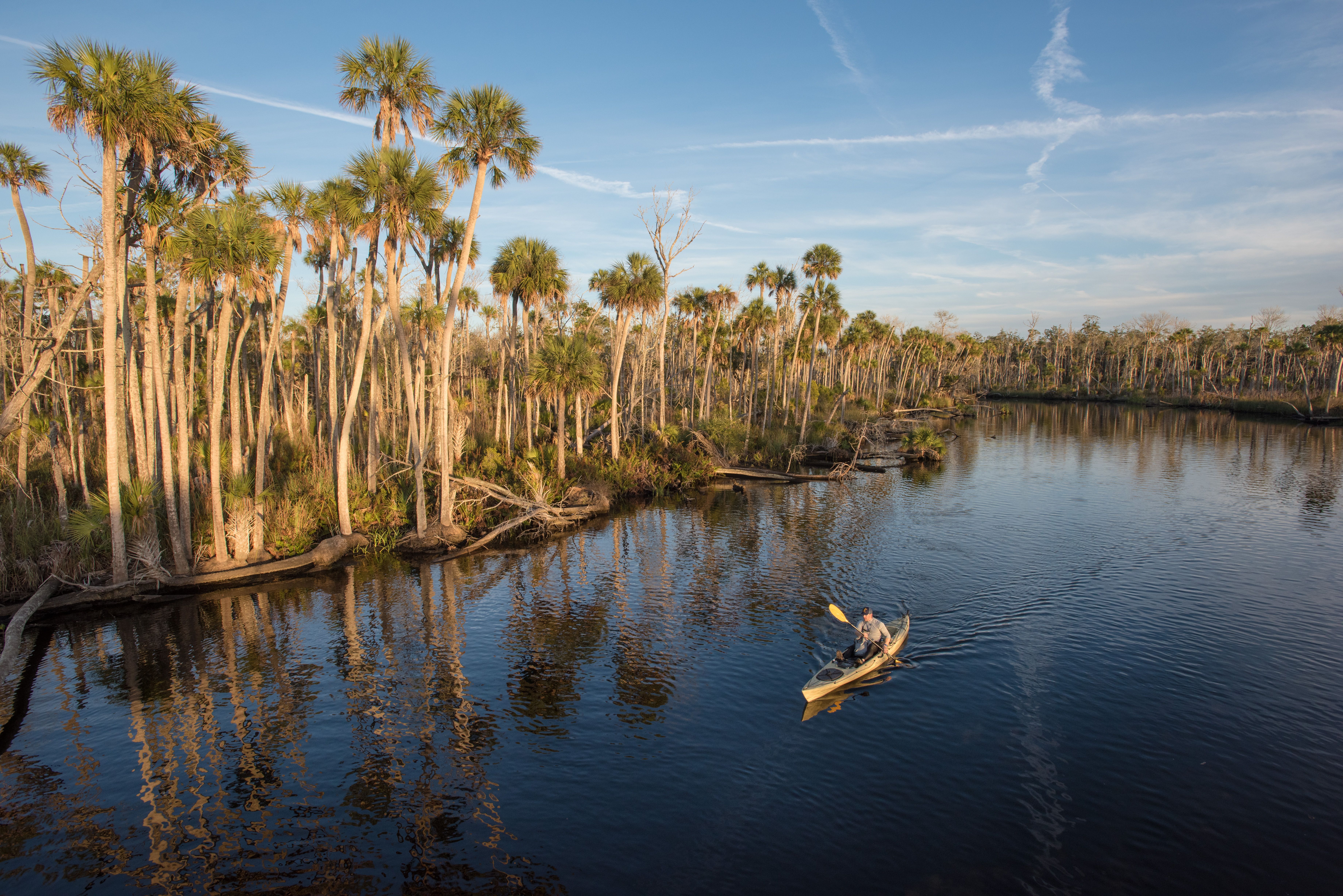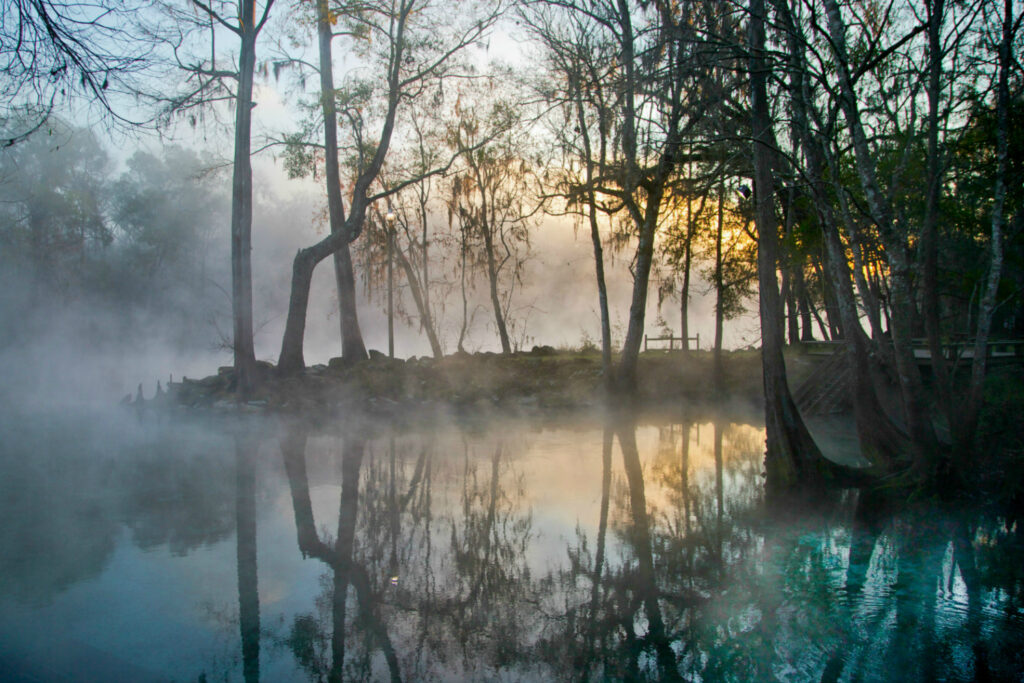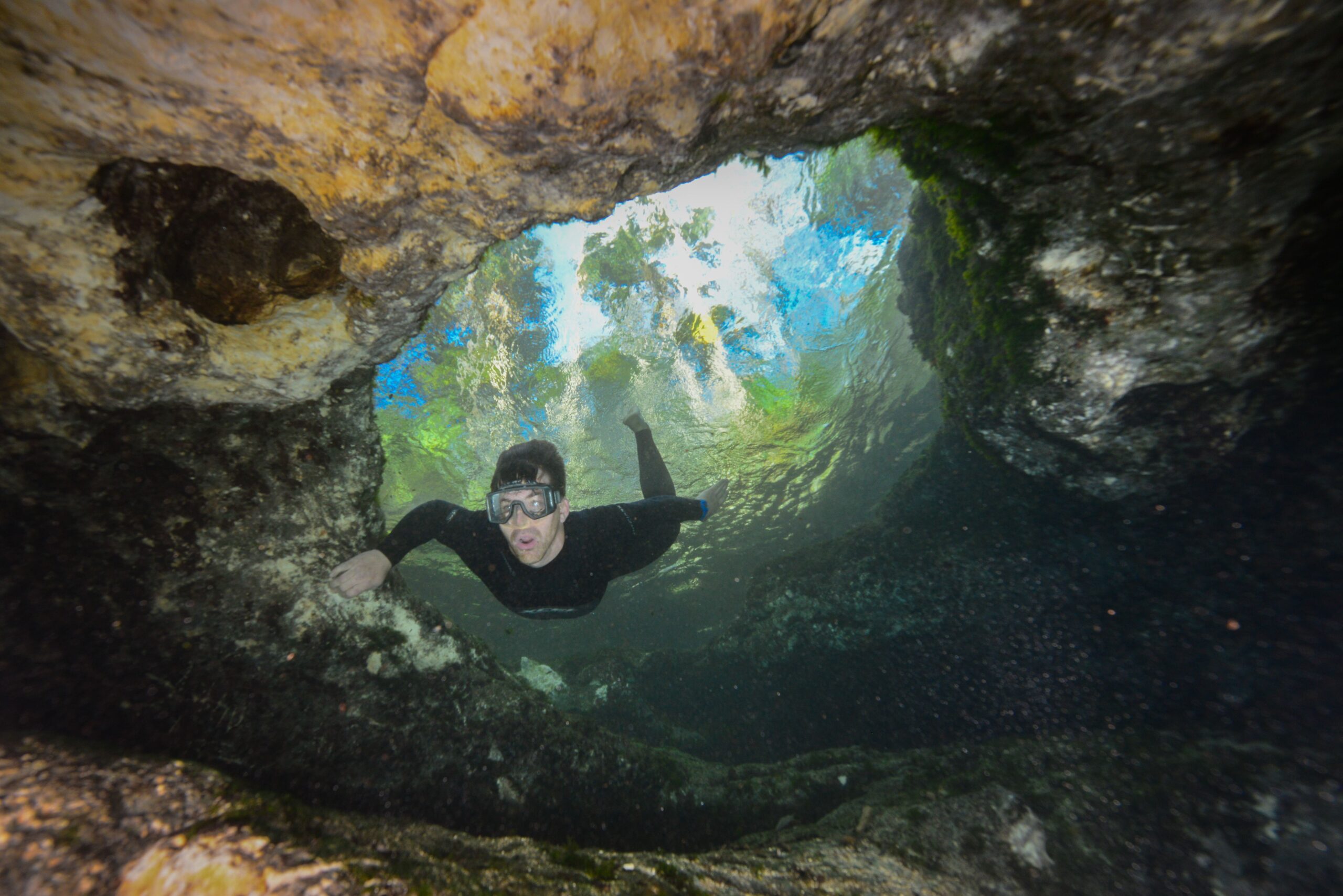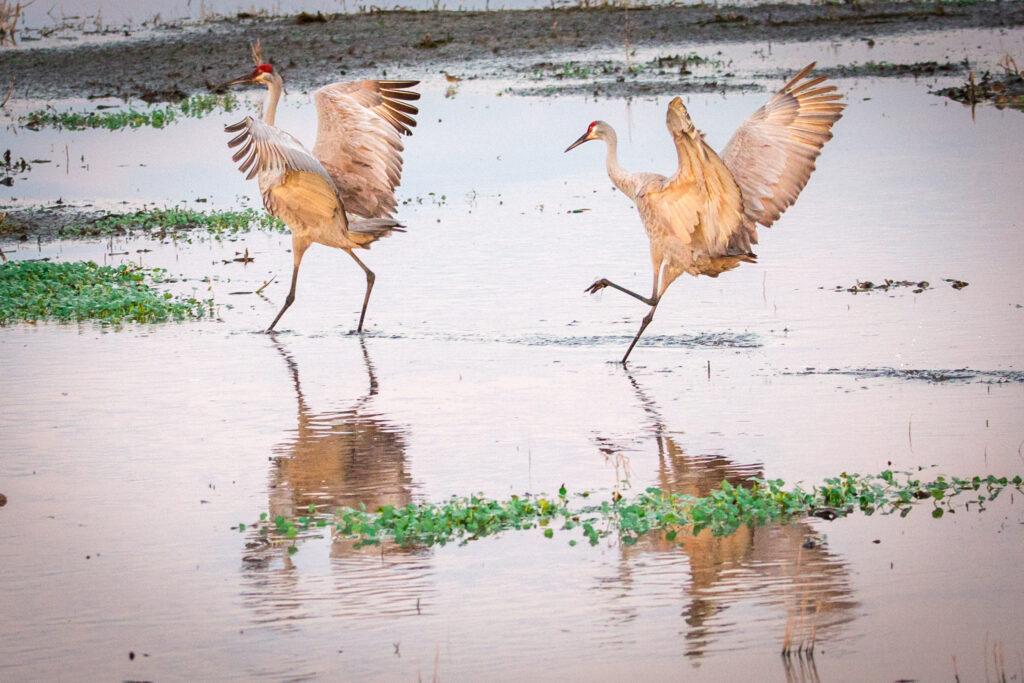Your Questions About the Florida Wildlife Corridor, Answered
What you need to know about this Sunshine State conservation effort.

Florida is home to a wildly wide range of ecosystems, ranging from forests where black bears roar and panthers roam to ranchlands that are home to some of the nation’s largest cattle producers.
Expanding protection to a larger portion of the Corridor would help protect the wildlife, wild lands, and the Sunshine State’s way of life for future generations of Floridians.
Want to learn more about the Florida Wildlife Corridor and why it’s wildly important to the state’s future? Read on.
What, exactly, is the Florida Wildlife Corridor?
The Florida Wildlife Corridor is a state-wide network of contiguous public and private lands encompassing nearly 18 million acres — more than 40% of the state!
As of 2021, over half of the Corridor (9.6 million acres) is protected from development. These conserved lands in the Florida Wildlife Corridor include both natural areas and working lands. The remaining 8.1 million acres are yet to be conserved and, without protection, could still be converted to development.
Why should I care about the Florida Wildlife Corridor, connected or not?
All Floridians rely on the Corridor and the economic, ecological, and adventurous gifts it gives us. Through 2025, the state’s population is expected to grow by 300,000 people each year — gaining roughly the population of another Orlando annually. Maintaining and protecting a connected landscape is critical in light of the continued growth of Florida’s human population.
Maintaining and protecting a connected landscape is critical in the face of continued growth of Florida’s human population.
The Corridor is home to farms, ranches, ecotourism, and outdoor recreational opportunities that enrich the lives of millions of people daily. Losing these natural and working lands will cause any economic gains to be offset by the loss of what makes Florida a destination state for tourists and residents alike.
Florida is also home to one of the greatest concentrations of endangered species in the country; protecting their habitats helps ensure their survival. The Corridor provides habitat to more than 1,700 species, including 60 currently considered at risk of extinction, such as the Florida panther and grasshopper sparrow.
What else do Floridians get from the Florida Wildlife Corridor?
The Corridor truly makes Florida, Florida, supporting jobs in the fishing, hunting, agricultural, and tourism sectors, all of which are essential to the continued economic growth and prosperity of the Sunshine State. Large parts of the Corridor also safeguard our water resources by slowing and filtering the flow of water from urban and suburban lands to our rivers, lakes, and estuaries.

Photo by Chrissy Martinez
Does conserving the Florida Wildlife Corridor limit economic development?
No. The Corridor shows that economic growth and environmental protection can go hand in hand. Farmers, foresters, and ranchers all benefit when their land is protected for generations to come.
The Corridor shows that economic growth and environmental protection can go hand in hand. Farmers, foresters, and ranchers all benefit when their land is protected for generations to come.
And tourism, Florida’s top industry, benefits from the state’s wildlife populations remaining strong and resilient. Boating, bird-watching, and commercial and recreational fishing contribute billions of dollars to the Sunshine State each year.
Can I explore the Florida Wildlife Corridor for myself?
Yes! The public is welcome to visit large swaths of the Corridor including local, state, and national parks, wildlife refuges, and forests, though other areas are off-limits, either to protect species and ecosystems or because they are private lands.
You can easily explore the Florida Wildlife Corridor at Apalachicola National Forest, Big Cypress National Preserve, Canaveral National Seashore, Fort Matanzas National Monument, Everglades National Park, Ocala National Forest, Osceola National Forest, and many more great locations.

What’s on the horizon for the Florida Wildlife Corridor?
In 2021, the state of Florida committed $400 million to land conservation, much of which is targeted at helping protect and connect the Corridor. In September 2021, nearly 20,000 acres within the Corridor in Hardee, Hendry, Indian River, Leon, Okeechobee, and Santa Rosa counties were approved for additional protection.
Still, more action is needed to protect lands and waterways in the Florida Wildlife Corridor.
Are you inspired? Help protect the Corridor by joining the Live Wildly campaign.

Photo by Chrissy Martinez

